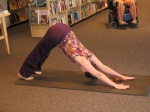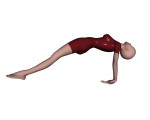“Nothing you write, if you hope to be any good, will ever come out as you first hoped.”
~Lillian Hellman
Lillian Hellman was a pioneering female playwright and American writer of the mid to latter 20th century whose plays and personal life have contributed to how many writers behave today whether they know it or not. Her legacy of a turbulent relationship with reknowned American mystery writer Dashiell Hammett is responsible for many stories and movies, and undoubtedly contributed to some contemporary works including the latest young adult title Dash & Lily’s Book of Dares by co-authors Rachel Cohn & David Levithan, who also wrote Nick and Nora’s Ultimate Playlist. Not claiming either of the Cohn/Levithan books were based on Hellman/Hammett, but the influences are obviously there in at least the name choices. The writing couple of the 30’s and 40’s were known as Dash and Lily, and Hammett wrote the wildly popular series The Thin Man whose main characters were husband and wife crime solvers Nick and Nora Charles. A legacy can have many developments.
What is well known about Hellman’s writing is her continual battle with others over the truth of what she wrote. She spent a great deal of her life defending herself and her work, so the quote is intriguing. It leads one to ponder the wonder of first drafts and what comes out of a first draft. Editors and writers have been having the “value of the first draft” battle since the first story was ever written. The first version, while it may be the whole truth, may not actually be the best version to publicize because of problems like grammar or punctuation. But as much work as it truly is to create that first draft, many writers are very hard pressed to see anything any better. They believe the first attempt, even if the punctuation has been cleaned up, is definitely the best. Rarely.
All writers write a SFD or sh!&&* first draft, so named by the wonderful Anne Lamott in her book Bird by Bird, Some Instructions on Writing and Life. It’s inevitable. The first draft simply isn’t publishable no matter who you are or how experienced a writer.
“Now, practically even better news than that of short assignments is the idea of sh!&&* first drafts. All good writers write them. This is how they end up with good second drafts and terrific third drafts. People tend to look at successful writers, writers who are getting their books published and maybe even doing well financially, and think that they sit down at their desks every morning feeling like a million dollars, feeling great about who they are and how much talent they have and what a great story they have to tell; that they take in a few deep breaths, push back their sleeves, roll their necks a few times to get all the cricks out, and dive in, typing fully formed passages as fast as a court reporter. But this is just the fantasy of the uninitiated.” (p.21)
Nothing you write aimed for publication comes out right the first time. It takes more than one pair of eyes and one brain to work out all the kinks. That’s what editing and editors are for. So be kind to readers and embrace the changes requested by an editor because no one’s stuff doesn’t stink the first time.
(Note: In the Lamott quote, I have taken the liberty of not using her exact word but a suggestion of that word, sh!&&*, for the protection of some readers’ sensibilities. By all means, pick up Lamott’s definitive book and read the actual words yourself.)
There are five primary areas of practice to the Writer Wellness plan. Every other week I will post an idea for relaxation (Monday Meditation,) creative play (Tuesday Tickle,) fitness and exercise (Wednesday Workout,) journaling and misc. (Thursday Thought,) and nutrition (Friday Feast.)
 Meanwhile, remember to look for a digital or print copy of Writer Wellness, A Writer’s Path to Health and Creativity at Who Dares Wins Publishing, http://whodareswinspublishing.com. A triple-shot deal is going on now at WDWPUB that includes my book. Please check it out.
Meanwhile, remember to look for a digital or print copy of Writer Wellness, A Writer’s Path to Health and Creativity at Who Dares Wins Publishing, http://whodareswinspublishing.com. A triple-shot deal is going on now at WDWPUB that includes my book. Please check it out.
And check out these great blogs for ideas to keep your writing and publishing healthy and prosperous.
http://writeitforward.wordpress.com/ Bob Mayer
http://jenniholbrooktalty.wordpress.com/ Jenni Holbrook
http://warriorwriters.wordpress.com/ Kristen Lamb
http://inspiration4writers.blogspot.com/ Inspiration for Writers, Inc.
http://pentopublish.blogspot.com/ Natalie Markey
http://amyshojai.com Amy Shojai
Have you subscribed to this Writer Wellness blog yet? Get email updates when a new post is added. Click “subscribe” and leave your email. That’s it and thanks in advance!
Be well, write well





